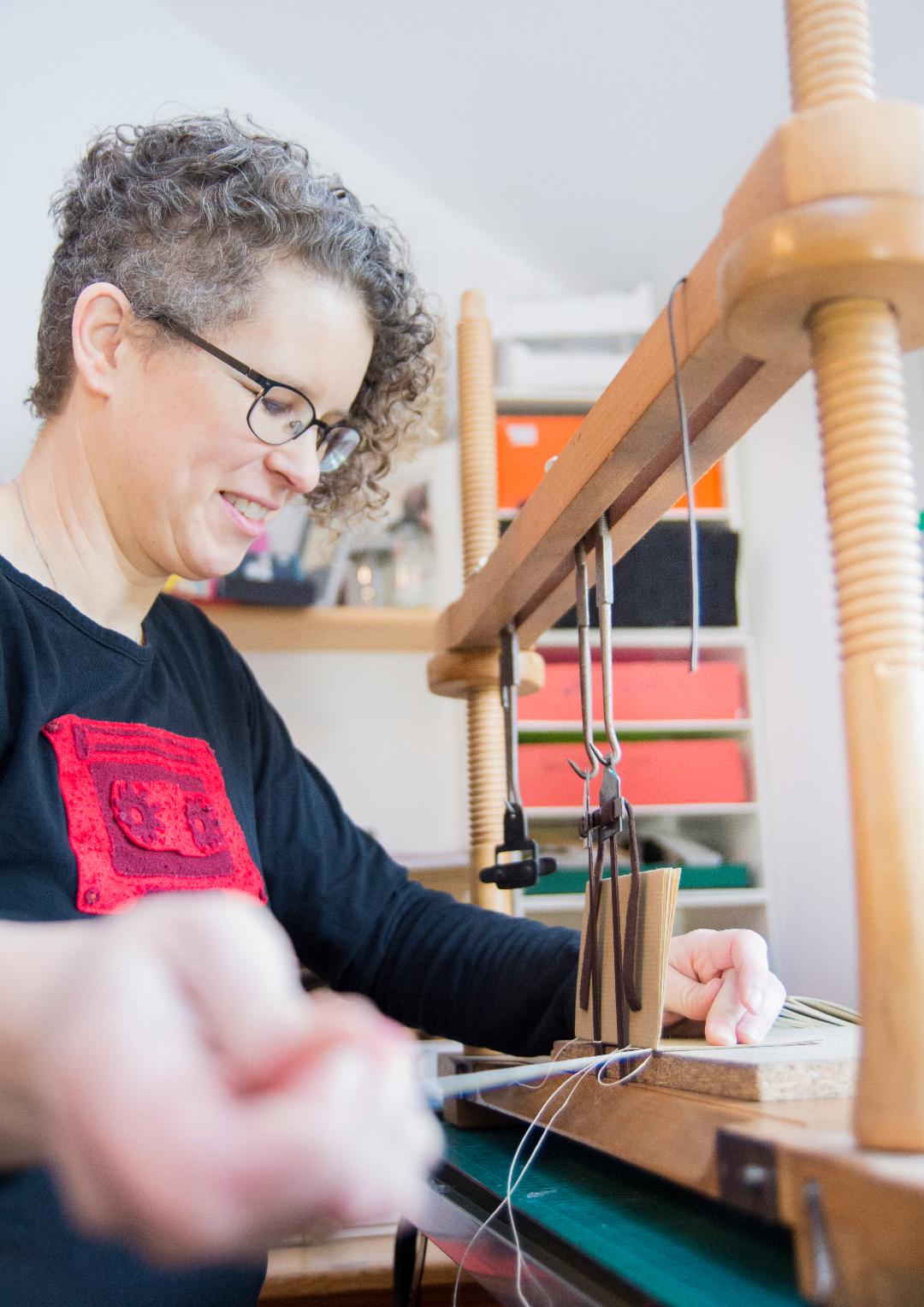Hilke Kurzke

How did you become involved in artist’s books?
After my PhD, while looking for a job, I rekindled my older hobby of binding books. When I first started out with binding, in the 90s, I learned from books that I borrowed (and photocopied) at my local library, but then the new millennium arrived, and I had the internet at my disposal. I was greatly fascinated by the variety of binding styles and the sheer amount of instruction that was available. I became interested in historic book structures, and the book as an object. I started making what I called “books with holes”. They were Asian stab bound books where I cut through the pages to use a layering effect. I posted pictures online and someone said they looked like tunnel books. I had never heard of that term before, but Google came to the rescue, and the rest is history.
My first works were often about books and book structures themselves. I tried to push the boundaries of what could be considered a book, and how they work. The first edition I made, the “Smiley Oracle”, investigates how users interact with a book.
What is the focus of your practice?
In artist books, form, content, and craft come together to form something unique. I am most satisfied when they all play an equal part in the final product which wouldn’t be the same if any one element was taken away. In reality, however, often one aspect dominates over the others – but it is not always the same one. I am interested in many different topics, which results in a range of distinct bodies of work, neither of which I consider complete at this point. The most important of these topics are the magic that is the written word, a thought-teleportation-device, really. Books as relics and objects and their mechanics, the humorous tragedy of human relationships, and more seriously, the perception of women, in particular pregnant women by society.
Besides being a book artist, I am also a writer. Among other things, I write flash fiction that often has a humorous element to it, illuminating human relationships. One body of work makes small edition books out of these short stories. They are not fine print, though, I still aim to make a very specific book form for them. “The City” for example, is a miniature flutter book with a pop-up in the centre. While “Absences” is a handwritten and stencilled accordion book in A6 format.
Another body of work focuses on “how books work” in both a mechanical and a metaphysical way. I am very interested in the writing up of language (or more generally the conservation of thoughts and ideas), the movement of pages, the sequential reception of writing; this triangle of relation between author – written word (or drawn image) – and reader. For these books I often play with structure and employ asemic writing or writing in code.
Pushing the boundaries of what a book can be, I am also engaged in a project that I call my “message in a bottle project”. For six years now I have been making miniature pieces of art, put them into my twin’s baby milk bottles and sent them off. More than 100 by now.
What are you working on at the moment?
I usually answer “too much” to that question. I am a writer, book artist, and printmaker, and I have several ongoing projects in all these areas. The most prominent of these, is a project about the role pregnancy has in society. More specifically what is being said to pregnant women, and how we talk (or not) about miscarriage. For this I work with human-form papiermaché sculptures. I embed scrolls within them and let them thus “talk”. But I am also making experimental prints on the subject, and I wrote several pieces in different formats. I’ll still have to see how it all comes together.
The first finished piece in this line of work is my edition of 10 scrolls with the title “346. A Journey While Staying As Still As Possible”. The text inside is a biographic story in diary form about my 7 week hospital stay while pregnant with twins in 2011. The artwork as a whole is about how pregnant women are treated in the medical system, about lack of control, and the many expectations we have about how women feel about reproduction.
instagram: buchertiger
facebook: buechertiger